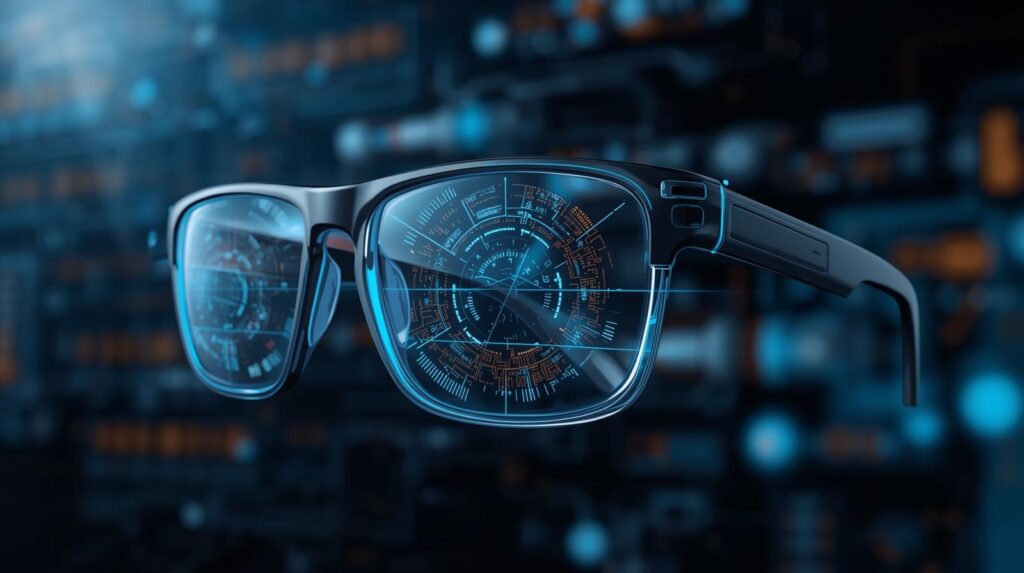In the ever-evolving landscape of wearable technology, smart glasses have emerged as a significant innovation, blending the virtual world with our physical reality. These futuristic glasses are not just about aesthetics or novelty; they represent a convergence of augmented reality (AR) technology and practical application, promising to revolutionize how we interact with both digital information and our environment.
Smart glasses are wearable technology devices that incorporate computer capabilities into eyeglasses. They enhance the wearer’s vision by overlaying digital information onto the real world. This fusion of augmented reality glasses and everyday functionality offers a hands-free experience of accessing data, capturing media, and even interacting with digital content in a three-dimensional space.
The Mechanics of Augmented Reality Glasses
At the core of smart glasses is augmented reality technology. These devices usually feature a combination of sensors, cameras, and display systems. The sensors track head movements and environmental conditions, allowing the software to adjust the digital content displayed in response to real-world changes. Cameras capture the surroundings, which are then processed by onboard systems to enhance or augment the viewer’s perception.
The display system, often integrated into the lenses, projects images directly into the user’s line of sight. This can range from simple notifications and text to complex 3D graphics. The challenge lies in delivering this information in a seamless manner that does not obstruct or distract from the user’s natural vision.
Potential Applications and Industry Impact

Smart glasses hold the potential to transform various industries. In healthcare, they can assist surgeons with real-time data during operations, enhancing precision and outcomes. In manufacturing, these devices can provide workers with instructions and diagnostic data, improving efficiency and safety. The retail sector can also benefit by offering augmented shopping experiences that blend digital content with physical products.
Challenges and Considerations
While the promise of smart glasses is vast, several challenges remain. Privacy concerns are paramount, as these devices often record and process visual data, raising issues around consent and data security. Battery life and comfort are also ongoing concerns, as current models strive to balance functionality with practicality. Moreover, the integration of such advanced technology into everyday life requires careful consideration of user experience and accessibility.
Conclusion
Smart glasses represent a pivotal step in the evolution of wearable technology. As augmented reality continues to advance, these devices are poised to become indispensable tools across various sectors. For business strategists and technology leaders, understanding the potential and limitations of smart glasses is essential. By staying informed and prepared to leverage these innovations, they can ensure their organizations remain at the forefront of technological transformation.
In conclusion, smart glasses are more than a glimpse into the future; they are a testament to how technology can seamlessly integrate with our daily lives to enhance efficiency, productivity, and overall experience. As we continue to explore their capabilities, these devices will undoubtedly shape the future of digital interaction




